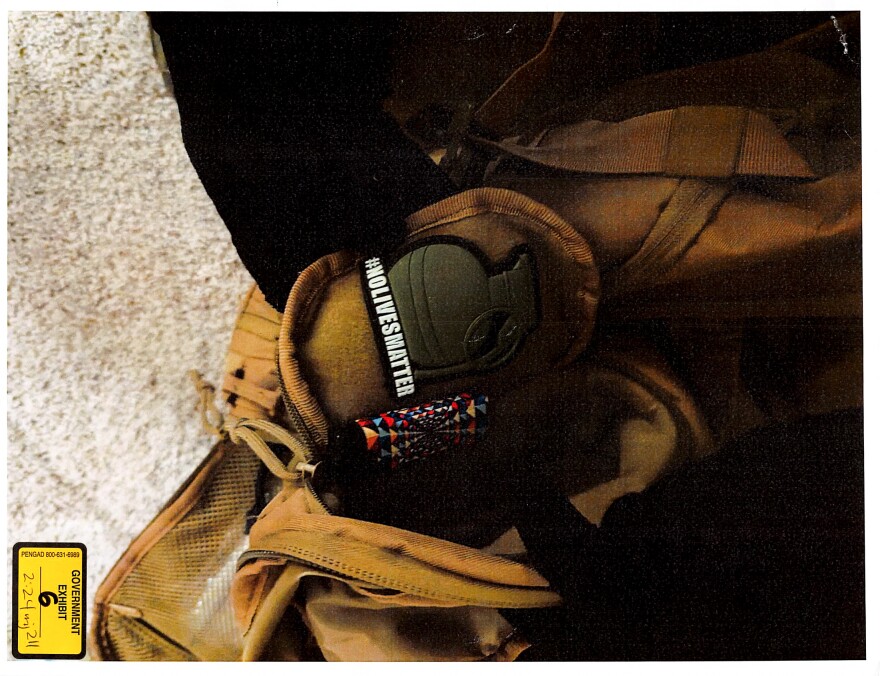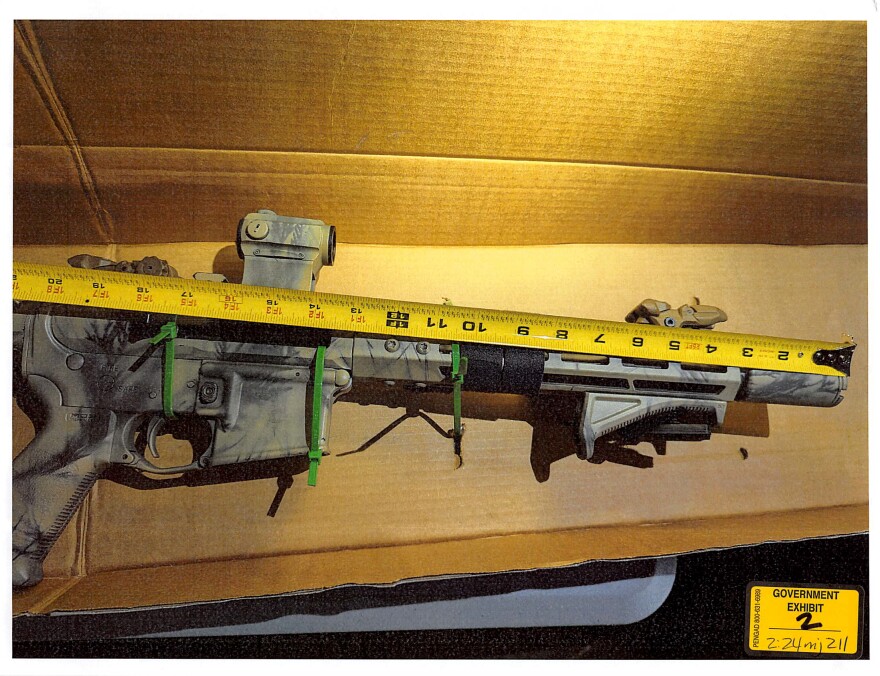A federal judge in Norfolk ruled this week that a man charged with owning an unregistered short-barrel rifle and accused of stockpiling homemade bombs will remain in jail ahead of trial.
Brad Spafford was arrested in December after an informant reported a series of incidents to law enforcement — including that Spafford allegedly lost three fingers while building an explosive device.
Court documents show the informant, who has a background in law enforcement, also said Spafford and “his friends were planning” something.
On Dec. 30, U.S. attorneys for the U.S. District Court for the Eastern District of Virginia argued that Spafford posed “a danger of irreparable harm should he be erroneously released.” In a filing, Spafford’s attorneys called the DOJ’s assertion “rank speculation and fear mongering.” They also noted that technicians had to “rig” the devices allegedly found at Spafford’s Isle of Wight County home to explode.
Charges related to the improvised explosive devices have not been filed, though in its motion to revoke his release, the DOJ noted Spafford “faces numerous additional potential charges for his unlawful possession of unregistered destructive devices, each of which carries an additional charge of ten years of imprisonment.”
A DOJ spokesperson previously declined to say whether those charges would be forthcoming. And on Wednesday, he didn’t comment on Spafford remaining in custody at the Western Tidewater Regional Jail in Suffolk.
During a recent detention hearing, defense attorney Jeffrey Swartz said that despite two years of surveillance, there was no evidence that his client had committed an act of violence, according to The Associated Press.
“What has he done during those two years?" Swartz asked about his 36-year-old client. "He purchased a home. He’s raised his children. He’s in a great marriage. He has a fantastic job, and those things all still exist for him.”
Spafford’s attorneys did not respond to a request for comment by publication.

Among evidence submitted by the government was a bag Spafford affixed a “#nolivesmatter” patch to. The hashtag — likely inspired by a 2021 song of the same name by Tom MacDonald — is connected to right-wing accelerationism, a belief that the federal government should be collapsed.
Amy Cooter is the director of research at Middlebury College's Center on Terrorism, Extremism and Counterterrorism. She’s familiar with a raft of extremist groups that during the past decade have increasingly turned memes, hashtags and online chatter into real-world violence.
“It's like a lot of things we've seen in recent years, especially things connected to accelerationism more broadly, where it does seem to be a largely online phenomena — but with clear impetus for some people to try to move that offline,” she said. “It can mean a lot of different things to a lot of different people.”
But the “nebulous nature” of the ideology is what makes NLM dangerous, Cooter said.
“I think it's kind of just another iteration of this nihilism, this push for potential violence, because people don’t see a lot of value in our current social political structure,” she said, “and don't necessarily see a way out of that.”
When the FBI detailed Spafford’s arrest, it noted that the more than 150 homemade explosive devices ranked as the largest seizure in its history. For comparison, during the 1999 Columbine High School shooting, Eric Harris and Dylan Klebold reportedly had 99 bombs.
Cooter contextualized Spafford’s single gun charge — and why the FBI highlighted the explosives it allegedly found: “I think that phrasing like that, especially if the charges don't necessarily match, it’s to try to convey to the public the seriousness of this individual — the potential threat of this individual.”
No Lives Matter and a constellation of other online extremist groups combine white nationalism and nihilism, and occasionally overlap with the contemporary militia movement, Cooter said.




